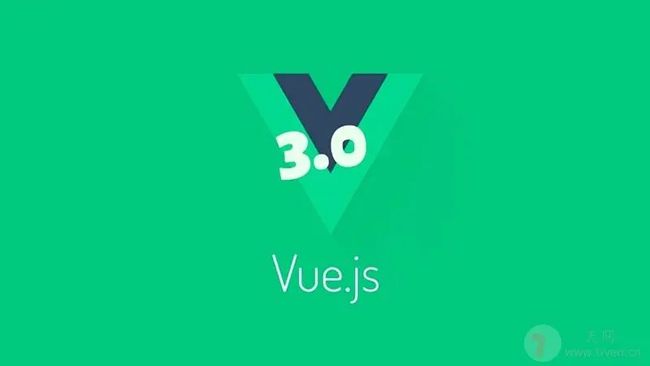- Linux中挂载Windows Samba共享的指南
执剑走天涯xp
linuxwindows运维
主要步骤:安装cifs-utils确保你的Linux系统已安装cifs-utils包。如果未安装,使用以下命令:sudoapt-getinstallcifs-utils#Debian/Ubuntu系统sudoyuminstallcifs-utils#CentOS/RHEL系统创建挂载点创建一个本地目录来挂载Windows共享:sudomkdir/mnt/share编辑/etc/fstab文件使用文
- 开源前端埋点监控插件Web-Tracing
研创通之逍遥峰
开源工具开源前端
Web-Tracing是一款专为前端项目设计的前端监控插件,它基于JavaScript设计,兼容跨平台使用,并提供了全方位的监控功能。开源地址:https://gitee.com/junluoyu/web-tracing-analysis以下是关于Web-Tracing的详细介绍:一、主要功能Web-Tracing涵盖了多个领域的监控手段,包括但不限于:埋点:通过事件监听,实现对用户交互行为的精准
- ROS多机通信(四)——Ubuntu 网卡 Mesh 模式配置指南
爱尔兰的楠小楠
机器人无人机开发ubuntulinux机器人去中心化分布式
引言使用Ad-hoc加路由协议和直接Mesh模式配置网卡实现的网络结构是一样的,主要是看应用选择,Ad-Hoc模式+B.A.T.M.A.N./OLSR优点:灵活性高,适合移动性强或需要优化的复杂网络。缺点:配置复杂,需手动管理路由协议。Mesh模式(802.11s)优点:配置简单,内置路由功能,易于部署。缺点:路由协议标准化,灵活性较低。在实现机器人之间的通信的时候,和为了适应大部分的场景我还是建
- 嵌入式Linux网络编程实战:基于libcurl实现Gitee文件上传
银河码
Linux网络编程linux网络giteec语言vscodetcp/ip服务器
嵌入式Linux网络编程实战:基于libcurl实现Gitee文件上传【本文代码已在立创·泰山派平台验证通过,可直接用于物联网设备数据上报场景】一、功能概述与实现效果1.1核心功能本地文件读取:支持任意二进制/文本文件Base64编码转换:符合RFC4648标准HTTP传输:通过libcurl实现,也可以使用HTTPS加密通信GiteeAPI对接:自动创建/更新仓库文件1.2运行效果演示#上传本地
- 在Mac M1/M2芯片上完美安装DeepCTR库:避坑指南与实战验证
ku_code_ku
机器学习macos推荐算法推荐系统
让推荐算法在AppleSilicon上全速运行概述作为推荐系统领域的最经常用的明星库,DeepCTR集成了CTR预估、多任务学习等前沿模型实现。但在AppleSilicon架构的Mac设备上,安装过程常因ARM架构适配、依赖库版本冲突等问题受阻。本文通过20+次环境搭建实测,总结出最稳定的安装方案。关键版本说明(2024年验证)组件推荐版本注意事项Python3.10.x向下兼容至3.7,但3.1
- 整形在内存中的存储(例题逐个解析)
祁同伟.
#C语言c语言
目录一.相关知识点1.截断:2.整形提升:3.如何截断,整型提升?(1)负数(2)正数(3)无符号整型,高位补0注意:提升后得到的是补码。要根据打印类型,判断是否有符号位;有效数字二.例题1.2.3.4.疑问:不应该算数转换为unsignedint吗?5.6.一.相关知识点1.截断:直接保留低位的二进制位2.整形提升:表达式中的字符(char)和短整形(short)操作数在使用之前被转换为普通整型
- 前端实现埋点&监控
Cipher_Y
前端
前端实现埋点&监控实现埋点功能的意义主要体现在以下几个方面:数据采集:埋点是数据采集领域(尤其是用户行为数据采集领域)的术语,它针对特定用户行为或事件进行捕获、处理和发送的相关技术及其实施过程。通过埋点,可以收集到用户在应用中的所有行为数据,例如页面浏览、按钮点击、表单提交等。数据分析:采集的数据可以帮助业务人员分析网站或者App的使用情况、用户行为习惯等,是后续建立用户画像、用户行为路径等数据产
- macOS 使用 enca 识别 文件编码类型(比 file 命令准确)
知识搬运bot
软件工具/使用技巧macosencafileiconv文件编码
文章目录macOS上安装enca基本使用起因-iconv关于enca安装Encaenca&enconv其它用法macOS上安装encabrewinstallenca基本使用encafilepath.txt示例$enca动态规划算法.txt[0]SimplifiedChineseNationalStandard;GB2312CRLFlineterminators起因-iconv在macOS上打开一些
- CG-0A 电子水尺 城市道路积水助手 预警实时监测
zhang13383089075
网络人工智能自动化运维服务器
产品概述本产品是一种采用微处理器芯片为控制器,内置通讯电路的数字式水位传感器,具备高的可靠性及抗干扰性能。适用于江、河、湖、水库及蓄水池、水渠等处的水位测量使用。本产品采用了生产工艺技术,使用不锈钢材料做壳体防护材料,内部用高性能的密封材料进行特殊处理,产品具有防腐、防冻、耐热、耐老化的特点。可在水利水文测量中各种恶劣环境下使用。本产品具有采样精度与传感器的测量体长度无关的特点,对不同变幅的应用环
- Java设计模式之解释器模式
飞翔中文网
java设计模式
概念解释器模式是一种行为型设计模式,用于定义一种语言的语法规则,并提供解释器来解释该语言中的表达式。作用其核心作用是将复杂的语法分解为简单的语法单元,通过递归组合的方式构建抽象语法树(AST),最终由解释器逐层解释执行。场景1.需要解释特定领域的语言:如数学公式、正则表达式、SQL查询等。2.语法相对简单且稳定:若语法频繁变化或过于复杂,建议使用解析器生成工具(如ANTLR)。3.需要灵活扩展语法
- TDengine 入坑
xijieyu
tdenginedockerlinux
的最近想折腾一个时序数据库,所以入坑了TDengine我的环境是WIN10+虚拟机ubuntu,开发语言是C#。在虚拟机里一开始使用docker来拉取TDengine镜像,后来发现docker的网络配置不熟,所以干脆直接在宿主机上安装TDengine直接使用。安装完了后,taos怎么都连接不上,显示"Unabletoestablishconnection",根据官方教程中的解释,一步一步排除各类连
- 雅特力AT32F435学习——3.PWM实验
数字梦想家
学习
PWM实验定时器浑身都是包其中PWM占大头,因为PWM应用太广了:呼吸灯、电机、蜂鸣器,生日火炬里的声音都是PWM干的,接下来就让我们学一下雅特力AT32F435单片机的PWM吧。基础知识老样子对于PWM的基础了解那肯定直接从数据手册学起,先要从头到尾过一遍。PWM是高级功能不是一般的定时器就能有的,所以第一时间就要看数据手册看看哪些定时器用PWM功能,并且确认PWM输入输出的通道和引脚,本次教学
- 数据库数值函数详解
web安全工具库
数据库oraclejvm
各类资料学习下载合集https://pan.quark.cn/s/8c91ccb5a474数值函数是数据库中用于处理数值数据的函数,可以用于执行各种数学运算、统计计算等。数值函数在数据分析及处理时非常重要,能够帮助我们进行数据的聚合、计算和转换。在本篇博客中,我们将详细介绍常用的数据库数值函数,并通过Python和SQLite进行示例,帮助您理解和应用这些函数。1.数值函数的基本概念数值函数是用于
- CSS 创建
智慧浩海
CSScss前端
当读到一个样式表时,浏览器会根据它来格式化HTML文档。如何插入样式表插入样式表的方法有三种:外部样式表(Externalstylesheet)内部样式表(Internalstylesheet)内联样式(Inlinestyle)外部样式表当样式需要应用于很多页面时,外部样式表将是理想的选择。在使用外部样式表的情况下,你可以通过改变一个文件来改变整个站点的外观。每个页面使用标签链接到样式表。标签在(
- VisionPro实战之传感器识别
视觉王小
VisionPro实战visionpro机器视觉c#
目录1.案例要求2.实现思路1.先进行图片格式转换,不然可能格式不匹配2.进行模板匹配,仔细观察之后发现可以从左侧凹陷的地方入手,再进行定位3.找出四条线段4.进行距离的测量5.编写脚本或者使用CogCreateGraphicLabelTool工具输出数据3.具体操作1.我们先创建一个CogImageConvertTool工具,进行图片转码操作。2.创建一个模板匹配工具CogPMAlignTool
- Python中Requests的Cookies的简单使用
北条苒茗殇
python开发语言Requests
概述Python的Requests库中有一个cookies,是用于管理HTTPCookie的工具,可以像字典一样操作Cookie,支持自动处理作用域(域名、路径)和持久化,cookies是一个RequestsCookieJar的类型。一、概念1.作用自动存储服务器返回的Cookie根据请求域名和路径进行自动发送匹配的Cookie支持手动添加、修改、删除Cookie2.RequestsCookieJ
- Pytest基础使用
北条苒茗殇
pytest
概述Pytest是Python里的一个强大的测试框架,灵活易用,可以进行功能,自动化测试使用,可以与Requests,Selenium等进行结合使用,同时可以生成Html的报告。一、Pytest的基本使用在未指定Pytest的配置文件时,会对以下文件进行执行:test_*.py,如:test_1.py*_test.py,如:1_test.py会对以下的类和函数进行执行:类:以Test_开头的类,如
- Java 并发编程实战:深入理解线程池的核心原理与最佳实践
全栈探索者chen
javajava服务器开发语言性能优化缓存node.js数据库
Java并发编程实战:深入理解线程池的核心原理与最佳实践1.为什么需要线程池?在Java并发编程中,直接创建和管理线程的成本较高,频繁创建线程会带来性能开销和资源浪费。线程池(ThreadPool)的作用:降低线程创建和销毁的开销,提高系统响应速度。提高系统吞吐量,充分利用CPU资源。避免资源耗尽,限制最大线程数,防止OOM(内存溢出)。支持任务排队,确保任务按照一定规则执行。2.线程池的核心组成
- 2025最新docker教程(四)
嘿rasa
2025最新教程系列dockereureka容器
Docker客户端docker客户端非常简单,我们可以直接输入docker命令来查看到Docker客户端的所有命令选项。runoob@runoob:~#docker可以通过命令dockercommand--help更深入的了解指定的Docker命令使用方法。例如我们要查看dockerstats指令的具体使用方法:runoob@runoob:~#dockerstats--help容器使用获取镜像如果
- STM32F1基于HAL库的学习记录实用使用教程分享(五、PWM驱动舵机、呼吸灯)
藤樂.
STM32学习stm32学习数据库
往期内容STM32F1基于HAL库的学习记录实用使用教程分享(一、GPIO_Output)STM32F1基于HAL库的学习记录实用使用教程分享(二、GPIO_Input按键)STM32F1基于HAL库的学习记录实用使用教程分享(三、外部中断按键)STM32F1基于HAL库的学习记录实用使用教程分享(四、OLEDIIC驱动软件IIC硬件IIC)文章目录往期内容前言一、PWMPWM如何控制LED亮度?
- Visual Studio Code官网下载地址及使用技巧(含常用的拓展插件推荐)
ITCTCSDN
vscodeide编辑器
VisualStudioCode(简称“VSCode”)是Microsoft于2015年4月发布的可运行于MacOS、Windows和Linux之上的跨平台源代码编辑器,它具有对JavaScript,TypeScript和Node.js的内置支持,并具有丰富的其他语言(例如C++,C#,Java,Python,PHP,Go)和运行时(例如.NET和Unity)扩展的生态系统。VisualStudi
- 交换机救命命令手册:华为 & 思科平台最全运维指令速查表
IT程序媛-桃子
数通华为认证服务器运维
引言:这是一份救命的交换机运维秘籍在交换机配置与故障排查过程中,不论你是初入网络世界的小白,还是年资数年的资深工程师,总会遇到那些“关键时刻靠得住的命令”。这篇文章,我将整理一份覆盖华为+思科双平台的实战命令手册,从最基础的设备状态查看,到VLAN、STP、防环、LACP、QOS、抓包、限速、安全加固等操作,通通囊括。关键时刻,拿来即用,就是这篇的全部意义。01️⃣基础生存命令:先活下来再说场景华
- MySQL中基于机器学习的自适应缓存热点识别优化策略——开启数据库性能新纪元
墨夶
数据库学习资料1数据库mysql机器学习
在数据驱动的世界里,数据库的性能直接影响到整个应用系统的响应速度和用户体验。随着业务量的增长和技术的发展,传统的缓存机制逐渐暴露出局限性。如何更智能地识别并利用热点数据进行缓存优化,成为提升数据库性能的关键所在。今天,我们将深入探讨一种创新的方法——基于机器学习的自适应缓存热点识别优化策略,并分享其在MySQL中的具体实现方案。为什么选择机器学习?传统上,开发者们依赖于手动配置或预设规则来决定哪
- Linux:动静态库
嶔某
Linuxlinux运维服务器
✨✨所属专栏:Linux✨✨✨✨作者主页:嶔某✨✨什么是库库是写好的现有的,成熟的可以复用的代码。现实中每个程序都需要依赖很多基础的底层库。世界上有很多大佬为了实现某一个功能,写了很多很NB的代码。他们把代码封装成一个库,这样我们不必写出像他们一样厉害的代码,只需要使用它们分享的库,也能使用对应的功能了。本质上来说库是一种可执行代码的二进制形式,可以被操作系统载入内存执行。静态库.a[Linux/
- 通过PROFINET通讯实时修改西门子直流调速器的内置PID 参数
!chen
技术分享自动化
在通讯映射地址里没有P2280这个参数选择P2280参数为非BICO参数,不能通过互联报文通讯实时修改。可以尝试通过PROFINET非周期通讯读写进行修改S7-1200通过PROFINET非周期性通讯修改驱动器参数S7-1200写参数时可以只使用“WRREC”,将写请求发送到驱动器,当需要从S7-1200读取“写参数”响应时,需使用RDREC。本示例中“WRREC”和“RDREC”的“RECORD
- 解决前后端分离跨域产生的session丢失问题
luckilyil
BUGjavaservlet
目录前言存储用户信息的方式Cookies:Token(令牌):LocalStorage/SessionStorage:Session:Redis:OAuth/OIDC:本篇文章主要讲使用session会话来存储信息会话机制1.何为一次会话,会话从什么时候开始,从什么时候结束?2.cookies如何保持会话,它的工作流程?3.什么是Session?Session的工作原理:问题出现解决方法总结前言现
- process.cwd()与__dirname的区别
库库的写代码
javascript开发语言ecmascript
process.cwd()是当前执行node命令时候的文件夹地址——工作目录,保证了文件在不同的目录下执行时,路径始终不变__dirname是被执行的js文件的地址——文件所在目录在electron进程中使用如果使用__dirname则会读取到当前运行目录(dist_electron)下面的文件,想要读取public中的文件需要使用process.cwd()来获取使用__dirname的报错:
- Go 语言实用工具:如何高效解压 ZIP 文件
程序员爱钓鱼
golangios开发语言
在日常开发中,我们经常需要处理ZIP文件,例如从远程服务器下载压缩包后解压、备份数据或处理日志文件等。在本文中,我们将介绍一个使用Go语言编写的高效ZIP文件解压工具,并提供示例代码帮助你快速上手。代码实现以下是Unzip函数的完整实现,它可以将ZIP文件解压到指定的目录,并返回解压后的文件路径列表。packageutilsimport("archive/zip""fmt""io""os""pat
- Open3D 点云DBSCAN聚类算法
MelaCandy
算法聚类numpy计算机视觉图像处理3d
目录一、DBSCAN基本原理二、代码实现2.1关键函数2.2完整代码三、实现效果3.1原始点云3.2聚类后点云Open3D点云算法汇总及实战案例汇总的目录地址:Open3D点云算法与点云深度学习案例汇总(长期更新)-CSDN博客一、DBSCAN基本原理DBSCAN(Density-BasedSpatialClusteringofApplicationswithNoise)是一种基于密度的聚类算法,
- python 列表倒序输出
小琳爱分享
pythonpython
python列表倒序输出#使用reverseli1=[1,6,4,3,7,9]li2=['a','m','s','g']li1.reverse()li2.reverse()print(li1,li2)#利用list切片li1=[1,6,4,3,7,9]li2=['a','m','s','g']print(li1[::-1])print(li2[::-1])#利用算法进行转换,这里需要用到深层cop
- html页面js获取参数值
0624chenhong
html
1.js获取参数值js
function GetQueryString(name)
{
var reg = new RegExp("(^|&)"+ name +"=([^&]*)(&|$)");
var r = windo
- MongoDB 在多线程高并发下的问题
BigCat2013
mongodbDB高并发重复数据
最近项目用到 MongoDB , 主要是一些读取数据及改状态位的操作. 因为是结合了最近流行的 Storm进行大数据的分析处理,并将分析结果插入Vertica数据库,所以在多线程高并发的情境下, 会发现 Vertica 数据库中有部分重复的数据. 这到底是什么原因导致的呢?笔者开始也是一筹莫 展,重复去看 MongoDB 的 API , 终于有了新发现 :
com.mongodb.DB 这个类有
- c++ 用类模版实现链表(c++语言程序设计第四版示例代码)
CrazyMizzz
数据结构C++
#include<iostream>
#include<cassert>
using namespace std;
template<class T>
class Node
{
private:
Node<T> * next;
public:
T data;
- 最近情况
麦田的设计者
感慨考试生活
在五月黄梅天的岁月里,一年两次的软考又要开始了。到目前为止,我已经考了多达三次的软考,最后的结果就是通过了初级考试(程序员)。人啊,就是不满足,考了初级就希望考中级,于是,这学期我就报考了中级,明天就要考试。感觉机会不大,期待奇迹发生吧。这个学期忙于练车,写项目,反正最后是一团糟。后天还要考试科目二。这个星期真的是很艰难的一周,希望能快点度过。
- linux系统中用pkill踢出在线登录用户
被触发
linux
由于linux服务器允许多用户登录,公司很多人知道密码,工作造成一定的障碍所以需要有时踢出指定的用户
1/#who 查出当前有那些终端登录(用 w 命令更详细)
# who
root pts/0 2010-10-28 09:36 (192
- 仿QQ聊天第二版
肆无忌惮_
qq
在第一版之上的改进内容:
第一版链接:
http://479001499.iteye.com/admin/blogs/2100893
用map存起来号码对应的聊天窗口对象,解决私聊的时候所有消息发到一个窗口的问题.
增加ViewInfo类,这个是信息预览的窗口,如果是自己的信息,则可以进行编辑.
信息修改后上传至服务器再告诉所有用户,自己的窗口
- java读取配置文件
知了ing
1,java读取.properties配置文件
InputStream in;
try {
in = test.class.getClassLoader().getResourceAsStream("config/ipnetOracle.properties");//配置文件的路径
Properties p = new Properties()
- __attribute__ 你知多少?
矮蛋蛋
C++gcc
原文地址:
http://www.cnblogs.com/astwish/p/3460618.html
GNU C 的一大特色就是__attribute__ 机制。__attribute__ 可以设置函数属性(Function Attribute )、变量属性(Variable Attribute )和类型属性(Type Attribute )。
__attribute__ 书写特征是:
- jsoup使用笔记
alleni123
java爬虫JSoup
<dependency>
<groupId>org.jsoup</groupId>
<artifactId>jsoup</artifactId>
<version>1.7.3</version>
</dependency>
2014/08/28
今天遇到这种形式,
- JAVA中的集合 Collectio 和Map的简单使用及方法
百合不是茶
listmapset
List ,set ,map的使用方法和区别
java容器类类库的用途是保存对象,并将其分为两个概念:
Collection集合:一个独立的序列,这些序列都服从一条或多条规则;List必须按顺序保存元素 ,set不能重复元素;Queue按照排队规则来确定对象产生的顺序(通常与他们被插入的
- 杀LINUX的JOB进程
bijian1013
linuxunix
今天发现数据库一个JOB一直在执行,都执行了好几个小时还在执行,所以想办法给删除掉
系统环境:
ORACLE 10G
Linux操作系统
操作步骤如下:
第一步.查询出来那个job在运行,找个对应的SID字段
select * from dba_jobs_running--找到job对应的sid
&n
- Spring AOP详解
bijian1013
javaspringAOP
最近项目中遇到了以下几点需求,仔细思考之后,觉得采用AOP来解决。一方面是为了以更加灵活的方式来解决问题,另一方面是借此机会深入学习Spring AOP相关的内容。例如,以下需求不用AOP肯定也能解决,至于是否牵强附会,仁者见仁智者见智。
1.对部分函数的调用进行日志记录,用于观察特定问题在运行过程中的函数调用
- [Gson六]Gson类型适配器(TypeAdapter)
bit1129
Adapter
TypeAdapter的使用动机
Gson在序列化和反序列化时,默认情况下,是按照POJO类的字段属性名和JSON串键进行一一映射匹配,然后把JSON串的键对应的值转换成POJO相同字段对应的值,反之亦然,在这个过程中有一个JSON串Key对应的Value和对象之间如何转换(序列化/反序列化)的问题。
以Date为例,在序列化和反序列化时,Gson默认使用java.
- 【spark八十七】给定Driver Program, 如何判断哪些代码在Driver运行,哪些代码在Worker上执行
bit1129
driver
Driver Program是用户编写的提交给Spark集群执行的application,它包含两部分
作为驱动: Driver与Master、Worker协作完成application进程的启动、DAG划分、计算任务封装、计算任务分发到各个计算节点(Worker)、计算资源的分配等。
计算逻辑本身,当计算任务在Worker执行时,执行计算逻辑完成application的计算任务
- nginx 经验总结
ronin47
nginx 总结
深感nginx的强大,只学了皮毛,把学下的记录。
获取Header 信息,一般是以$http_XX(XX是小写)
获取body,通过接口,再展开,根据K取V
获取uri,以$arg_XX
&n
- 轩辕互动-1.求三个整数中第二大的数2.整型数组的平衡点
bylijinnan
数组
import java.util.ArrayList;
import java.util.Arrays;
import java.util.List;
public class ExoWeb {
public static void main(String[] args) {
ExoWeb ew=new ExoWeb();
System.out.pri
- Netty源码学习-Java-NIO-Reactor
bylijinnan
java多线程netty
Netty里面采用了NIO-based Reactor Pattern
了解这个模式对学习Netty非常有帮助
参考以下两篇文章:
http://jeewanthad.blogspot.com/2013/02/reactor-pattern-explained-part-1.html
http://gee.cs.oswego.edu/dl/cpjslides/nio.pdf
- AOP通俗理解
cngolon
springAOP
1.我所知道的aop 初看aop,上来就是一大堆术语,而且还有个拉风的名字,面向切面编程,都说是OOP的一种有益补充等等。一下子让你不知所措,心想着:怪不得很多人都和 我说aop多难多难。当我看进去以后,我才发现:它就是一些java基础上的朴实无华的应用,包括ioc,包括许许多多这样的名词,都是万变不离其宗而 已。 2.为什么用aop&nb
- cursor variable 实例
ctrain
variable
create or replace procedure proc_test01
as
type emp_row is record(
empno emp.empno%type,
ename emp.ename%type,
job emp.job%type,
mgr emp.mgr%type,
hiberdate emp.hiredate%type,
sal emp.sal%t
- shell报bash: service: command not found解决方法
daizj
linuxshellservicejps
今天在执行一个脚本时,本来是想在脚本中启动hdfs和hive等程序,可以在执行到service hive-server start等启动服务的命令时会报错,最终解决方法记录一下:
脚本报错如下:
./olap_quick_intall.sh: line 57: service: command not found
./olap_quick_intall.sh: line 59
- 40个迹象表明你还是PHP菜鸟
dcj3sjt126com
设计模式PHP正则表达式oop
你是PHP菜鸟,如果你:1. 不会利用如phpDoc 这样的工具来恰当地注释你的代码2. 对优秀的集成开发环境如Zend Studio 或Eclipse PDT 视而不见3. 从未用过任何形式的版本控制系统,如Subclipse4. 不采用某种编码与命名标准 ,以及通用约定,不能在项目开发周期里贯彻落实5. 不使用统一开发方式6. 不转换(或)也不验证某些输入或SQL查询串(译注:参考PHP相关函
- Android逐帧动画的实现
dcj3sjt126com
android
一、代码实现:
private ImageView iv;
private AnimationDrawable ad;
@Override
protected void onCreate(Bundle savedInstanceState)
{
super.onCreate(savedInstanceState);
setContentView(R.layout
- java远程调用linux的命令或者脚本
eksliang
linuxganymed-ssh2
转载请出自出处:
http://eksliang.iteye.com/blog/2105862
Java通过SSH2协议执行远程Shell脚本(ganymed-ssh2-build210.jar)
使用步骤如下:
1.导包
官网下载:
http://www.ganymed.ethz.ch/ssh2/
ma
- adb端口被占用问题
gqdy365
adb
最近重新安装的电脑,配置了新环境,老是出现:
adb server is out of date. killing...
ADB server didn't ACK
* failed to start daemon *
百度了一下,说是端口被占用,我开个eclipse,然后打开cmd,就提示这个,很烦人。
一个比较彻底的解决办法就是修改
- ASP.NET使用FileUpload上传文件
hvt
.netC#hovertreeasp.netwebform
前台代码:
<asp:FileUpload ID="fuKeleyi" runat="server" />
<asp:Button ID="BtnUp" runat="server" onclick="BtnUp_Click" Text="上 传" />
- 代码之谜(四)- 浮点数(从惊讶到思考)
justjavac
浮点数精度代码之谜IEEE
在『代码之谜』系列的前几篇文章中,很多次出现了浮点数。 浮点数在很多编程语言中被称为简单数据类型,其实,浮点数比起那些复杂数据类型(比如字符串)来说, 一点都不简单。
单单是说明 IEEE浮点数 就可以写一本书了,我将用几篇博文来简单的说说我所理解的浮点数,算是抛砖引玉吧。 一次面试
记得多年前我招聘 Java 程序员时的一次关于浮点数、二分法、编码的面试, 多年以后,他已经称为了一名很出色的
- 数据结构随记_1
lx.asymmetric
数据结构笔记
第一章
1.数据结构包括数据的
逻辑结构、数据的物理/存储结构和数据的逻辑关系这三个方面的内容。 2.数据的存储结构可用四种基本的存储方法表示,它们分别是
顺序存储、链式存储 、索引存储 和 散列存储。 3.数据运算最常用的有五种,分别是
查找/检索、排序、插入、删除、修改。 4.算法主要有以下五个特性:
输入、输出、可行性、确定性和有穷性。 5.算法分析的
- linux的会话和进程组
网络接口
linux
会话: 一个或多个进程组。起于用户登录,终止于用户退出。此期间所有进程都属于这个会话期。会话首进程:调用setsid创建会话的进程1.规定组长进程不能调用setsid,因为调用setsid后,调用进程会成为新的进程组的组长进程.如何保证? 先调用fork,然后终止父进程,此时由于子进程的进程组ID为父进程的进程组ID,而子进程的ID是重新分配的,所以保证子进程不会是进程组长,从而子进程可以调用se
- 二维数组 元素的连续求解
1140566087
二维数组ACM
import java.util.HashMap;
public class Title {
public static void main(String[] args){
f();
}
// 二位数组的应用
//12、二维数组中,哪一行或哪一列的连续存放的0的个数最多,是几个0。注意,是“连续”。
public static void f(){
- 也谈什么时候Java比C++快
windshome
javaC++
刚打开iteye就看到这个标题“Java什么时候比C++快”,觉得很好笑。
你要比,就比同等水平的基础上的相比,笨蛋写得C代码和C++代码,去和高手写的Java代码比效率,有什么意义呢?
我是写密码算法的,深刻知道算法C和C++实现和Java实现之间的效率差,甚至也比对过C代码和汇编代码的效率差,计算机是个死的东西,再怎么优化,Java也就是和C
